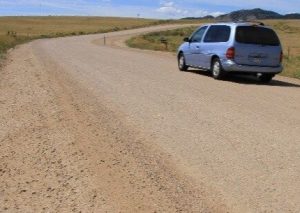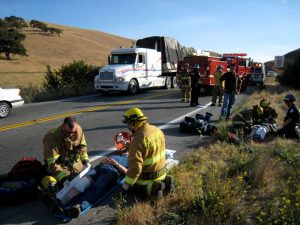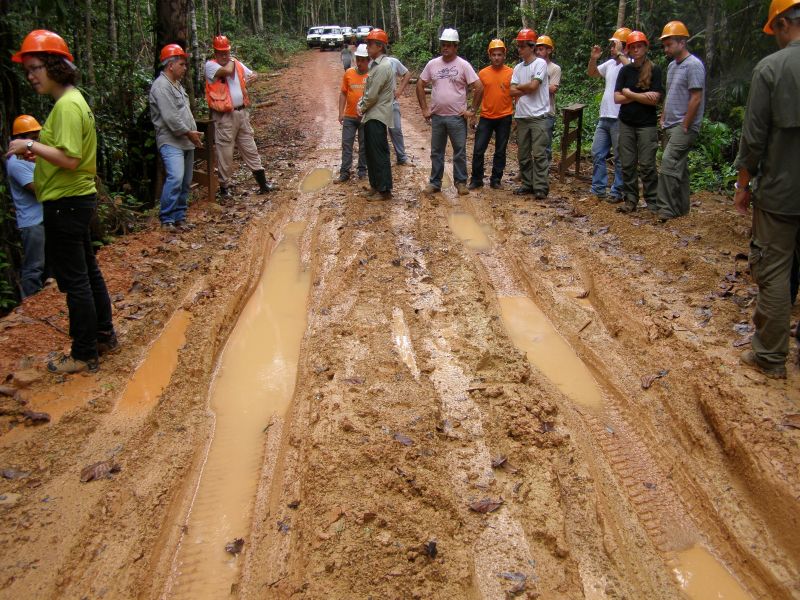 Gordon R. Keller
Gordon R. KellerFor the past three decades, low-volume roads best engineering and management practices training has been conducted in numerous developing countries, particularly in Latin America. The training has been primarily sponsored by the USDA Forest Service’s Office of International Programs and the former United States Agency for International Development (USAID), with occasional support from local agencies, the World Bank, and various universities and nongovernmental organizations (NGOs). Depending on the sponsors and host agencies, the training has focused on either basic road engineering or environmental mitigations for low-volume rural or forest roads.
Initial Development
Early training efforts began around 1995 with Caminos, a branch of the Guatemalan road agency, and the development of a training manual titled Caminos Rurales Con Impactos Minimos. This work, done in collaboration with a Forest Service employee assigned to Caminos, led to USAID–sponsored road reviews and training in Honduras with the National Institute of Forest Conservation and Development, a forestry group. As part of this training, a draft of Low-Volume Roads Engineering Best Management Practices Field Guide was developed by the author, then a USDA Forest Service geotechnical engineer, and James Sherar, a logging engineer. This guide—originally in Spanish—was later revised, expanded, and published in English in partnership with the Conservation Management Institute at Virginia Polytechnic Institute and State University (Virginia Tech) in Blacksburg, which had collaborated with the Forest Service on various international projects.
In the early 2000s, based on work in Latin America, FHWA’s Office of International Programs and the Pan American Institute of Highways sponsored a series of rural-road training courses in Mexico and Central America. This led to an ongoing series of courses in collaboration with the Instituto Mexicano del Transporte (IMT), Mexico’s equivalent of the National Highway Institute, in Querétaro, Mexico. After several years, IMT translated the full English version of the Low-Volume Roads Engineering Best Management Practices Field Guide back to Spanish. This translation was reviewed by Virginia Tech staff and engineers in Colombia to ensure it used a universally understood Spanish technical vocabulary. Both the Spanish and English versions have since been reprinted in paper and digital formats and continue to serve as key training materials.
Expanded Efforts
Over the past 20 years, numerous forest- and rural-roads training courses have been sponsored by the Forest Service, along with related training in resource and forest management subjects such as firefighting, entomology (i.e., the study of insects), watershed management, and reduced-impact logging. The rural roads courses, which typically last three to five days, have included classroom instruction and at least one field day to examine local road issues, review good and bad practice, and discuss engineering and environmental solutions such as water-quality protection and wildlife crossings. Classroom topics generally have covered weather impacts and mitigations, road geometric design, logging systems, basic hydrology and hydraulics, drainage systems (i.e., surface drainage, culverts, bridges, and fords), slope stabilization, roadway materials, and erosion control.
More recent training has incorporated vulnerability-reduction measures to address the increasing impacts of wildfires, storms, and floods. Courses have been tailored to local conditions and audiences, with content adjusted for engineers, field technicians, or resource personnel such as biologists and geologists. The focus has been on practical, applicable information rather than on highly technical details and formulas.
To date, Forest Service–USAID courses have been delivered in nearly every country in Central and South America, as well as in Georgia, Haiti, Morocco, Nepal, Sudan, Uganda, and Ukraine—countries where the U.S. government has long had logging, social, or technical development programs. Many courses have involved partnerships with humanitarian and other NGOs such as CARE, Save the Children, the World Wildlife Fund, the Nature Conservancy, and Conservation International.
Other training courses and workshops have included collaborations with diverse organizations, such as the Commonwealth of Northern Mariana Islands on Saipan and Rota in the South Pacific; Victoria, Australia’s Department of Sustainability and Environment; the Australian Roads Research Board; the Organization of American States in Central America; and Fundación para Conservación y Desarollo Sostenible, an NGO in Colombia’s Guaviare region.
Several countries and programs with extensive rural- and forest-road training involvement are highlighted in the case examples that follow.
Bolivia: Logging-Road Training Program
Between 2004 and 2013, multiple logging-road courses were conducted in Bolivia—particularly in villages around Santa Cruz—as part of BOLFOR, a Bolivian government forest management program. Recognizing the need for institutionalized training, the program expanded to the Universidad Autonóma Gabriel René Moreno, a forestry university in Santa Cruz, to develop a forest-roads course and train instructors. Though the course curriculum was developed, the Forest Service’s involvement ended prematurely when Bolivia’s political administration changed, leading to the termination of many U.S. programs.
 Gordon R. Keller
Gordon R. Keller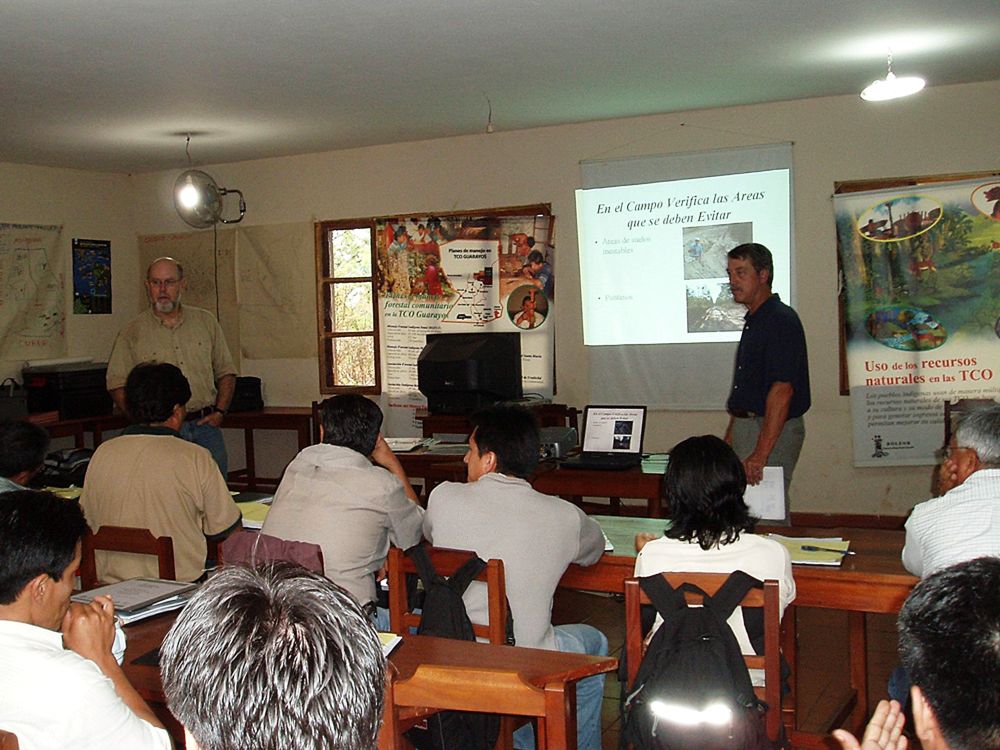 Gordon R. Keller
Gordon R. Keller- Stout planks of a logging-road bridge near Santa Cruz, Bolivia, serve as a classroom for a group of Bolivian engineers. The U.S.–sponsored training, conducted with Bolivia’s forestry program and two universities, expanded to include a forest-roads curriculum. (Gordon R. Keller)
- Bolivian engineers learn effective logging-road management practices in a classroom where natural-resources posters hanging from windows capture almost as much attention as the presentation. (Gordon R. Keller)
Brazil: Reduced Impact Logging Program and Amazon Roads Manual
Because of extensive logging in the Amazon rainforest, the Forest Service, USAID, and the Tropical Forest Foundation—a nonprofit organization dedicated to proper forest management and reduced-impact logging worldwide—launched a Reduced Impact Logging Program, which included forest logging-roads training from 2004 to 2016. Training was conducted in the states of Pará, Acre, and Rondônia, where extensive logging operations were underway. As part of this initiative, the Low-Volume Roads Best Management Practices Engineering Field Guide was translated into Portuguese, and an Amazon Basin Forest Roads Manual was developed. (The unpublished manual is available on ResearchGate.) The program was discontinued when a political shift in Brazil led to the termination of U.S.–supported initiatives. However, the Brazilian Forest Service continues to use the resource materials.
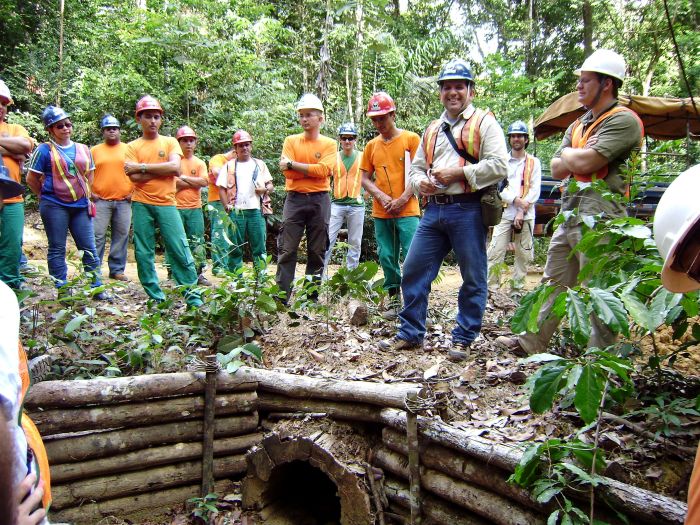 Gordon R. Keller
Gordon R. Keller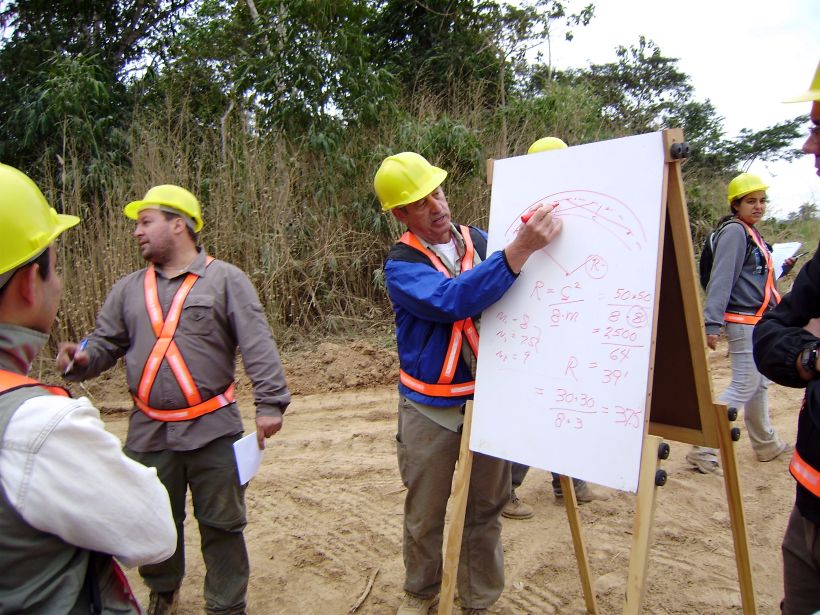 Gordon R. Keller
Gordon R. Keller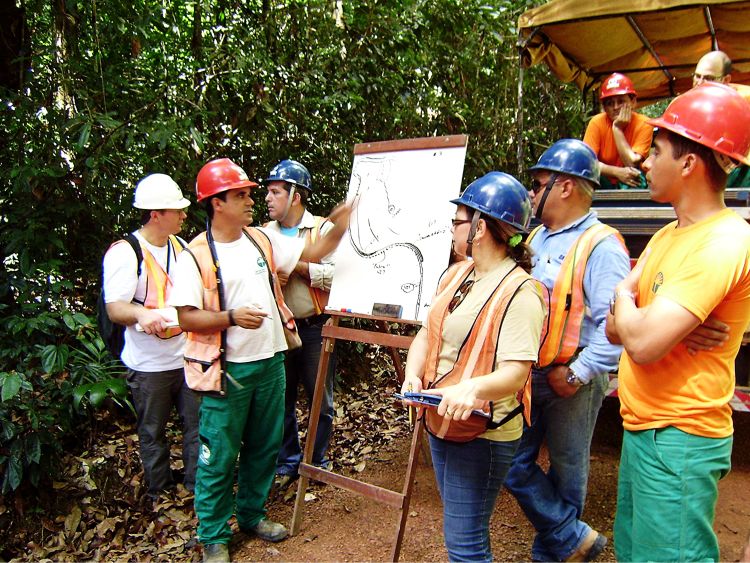 Gordon R. Keller
Gordon R. Keller- Field time for trainees in Brazil’s Reduced Impact Logging Program includes examining culvert design and construction in Brazil’s Cauaxi region, where local materials such as hollow tree trunks and logs can substitute for metal and cement. (Gordon R. Keller)
- Training program participants calculate the curve of a road during a field exercise in the Rio Branco region of Brazil’s western Amazon. (Gordon R. Keller)
- A field exercise in Cauaxi, Brazil’s eastern gateway to the Amazon, includes mapping stream crossings and problematic road areas. (Gordon R. Keller)
Costa Rica: Rural-Roads Training
Between 2004 and 2019, rural-roads training was conducted in Costa Rica in collaboration with the Ministry of Public Works and Transport and later with LANAMME, the National Laboratory of Materials and Structural Models at the University of Costa Rica. Courses were held in various municipalities, including Cartago, Puriscal, San Ramón, Miramar, Guanacaste, and San José. Today, most municipal- and rural-roads training and support is managed by LANAMME staff.
 Gordon R. Keller
Gordon R. Keller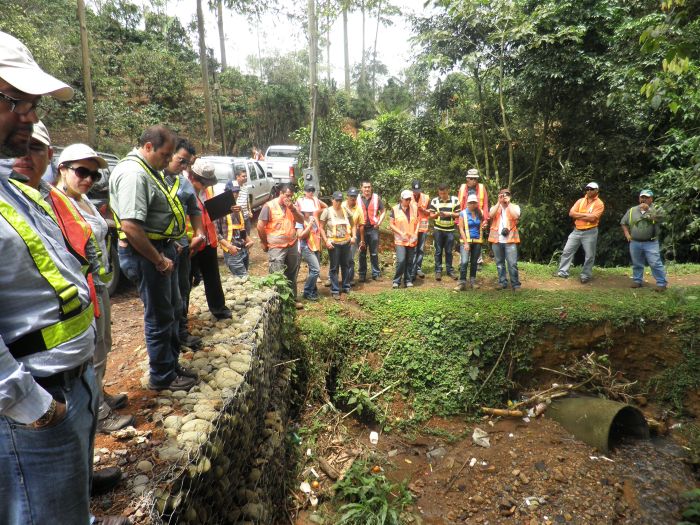 Gordon R. Keller
Gordon R. Keller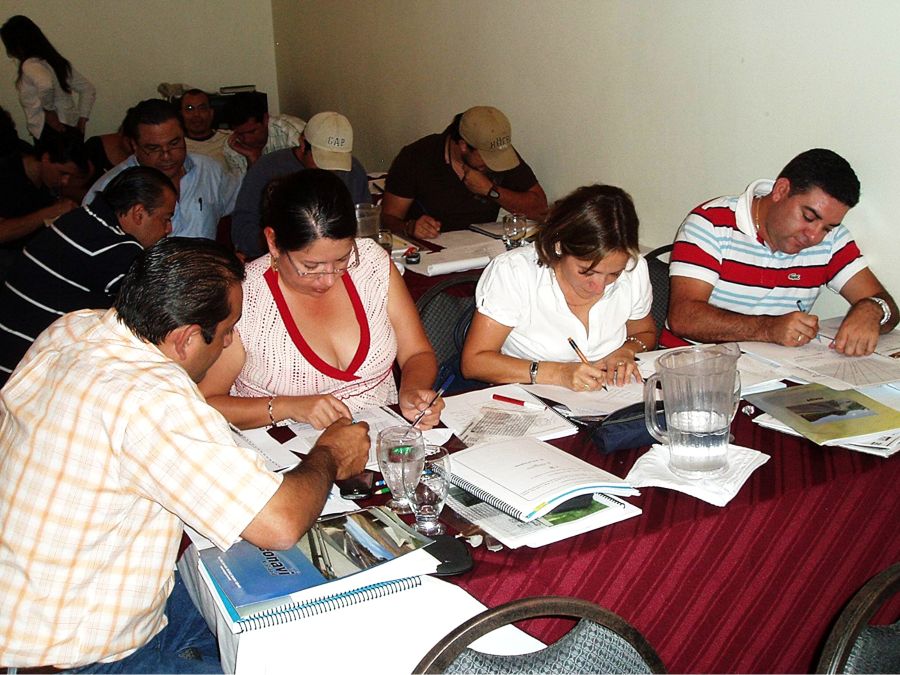 Gordon R. Keller
Gordon R. Keller- Rural-roads training in Costa Rica includes field site lectures and visits in various provinces—such as this roadside lecture in Miramar—to discuss local problems and best engineering design and management practices. (Gordon R. Keller)
- Engineers gather for a culvert exercise in Puriscal. (Gordon R. Keller)
- Classroom coursework and exercises are basic parts of low-volume road engineer training. (Gordon R. Keller)
World Bank Training in India and China
World Bank–funded rural-roads training was conducted in Fuzhou, Ankang, and Ningxia, China (2009–2011) and in Shillong and Dehradun, India (2012), followed by Wrangal (2016) and Shillong and Shimla (2019), also in India. This training led to the development of two hill-roads manuals, including the Hill Roads Best Engineering Practices Guide, as part of a national rural-roads development program. These documents, based on field reviews in the states of Meghalaya, Uttarakhand, and Himachal Pradesh, are now under review by the Indian Roads Congress—akin to AASHTO in the United States—following the retirement of the World Bank project leader.
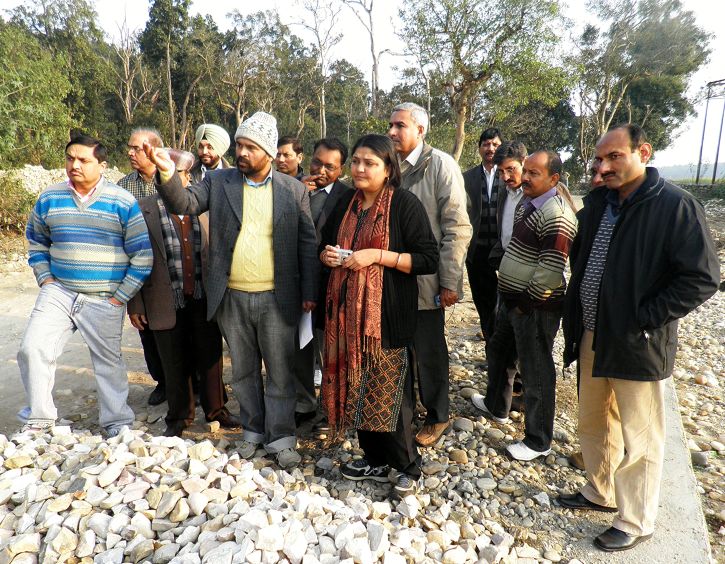 Gordon R. Keller
Gordon R. Keller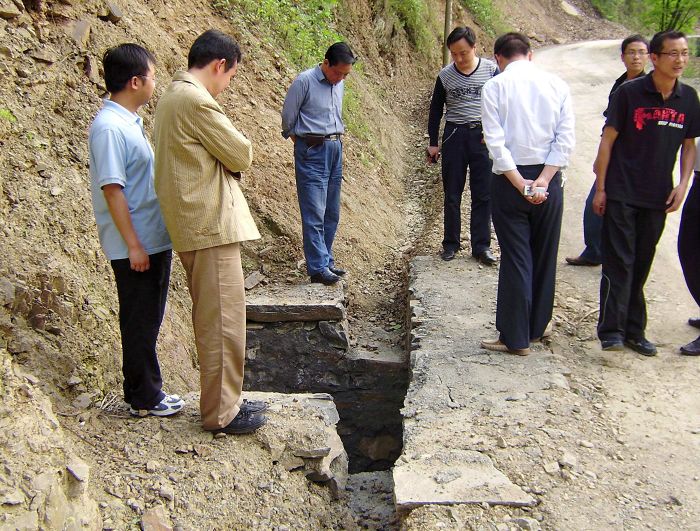 Gordon R. Keller
Gordon R. Keller- Fieldwork experiences, such as examining the quality of materials being used on a roadway surface in Dehradun, India, were a key component of World Bank–sponsored rural-roads training held in India and China between 2009 and 2019. Part of economic development initiatives in those countries aimed at connecting isolated communities, the effort led to the development of a hill-roads manual in India for engineers and transportation planners. (Gordon R. Keller)
- Low-volume road engineers in China inspect materials used in a drainage system. (Gordon R. Keller)
Indicators of Success
Measuring the success and effectiveness of these training programs worldwide has been challenging. Multiple courses have been presented in most countries, and course examinations indicate reasonable comprehension. Upon completion of the courses, participants responded positively, and sponsors have provided strong endorsements.
However, the following challenges remain:
- Local resources are often insufficient to sustain training without external support.
- Local agencies and NGOs have high staff turnover because trained personnel frequently move on to better paying jobs in the private sector.
- Political changes frequently disrupt international cooperation and training programs.
- To support ongoing learning, training materials—including manuals, references, and course presentations—are provided to participants. However, leaving materials solely with senior officials is often ineffective, as the materials are not always disseminated to field personnel.
Conclusions
From years of courses presented in various developing regions, the following conclusions emerge:
- Changing conditions and rapid personnel turnover in many agencies make providing long-term or ongoing training and technology transfer difficult. Institutionalizing this information and training in schools, preferably as university-level courses, could fill this need for continuing education. Ideally, courses that have been developed will continue to be taught—with follow-up training and workshops.
- Sources of information and training similar to FHWA’s Local Technical Assistance Program centers, which provide technical assistance and training to local and rural-road agencies nationwide, could be developed and funded in developing countries or regions. Engineers and technicians in developing regions dealing with rural-road design and management could benefit from expanded access to sources of information, reference materials, and technical libraries.*
- Given the estimate that 15.5 million miles (25 million kilometers) of new roads will be built worldwide by 2050, mostly in developing regions (1), rural-roads engineering training will remain an ongoing need.
* Digital versions of the sources mentioned in this article—including copies of the Field Guide in English, Spanish, Portuguese, and French—are available by contacting the author.

